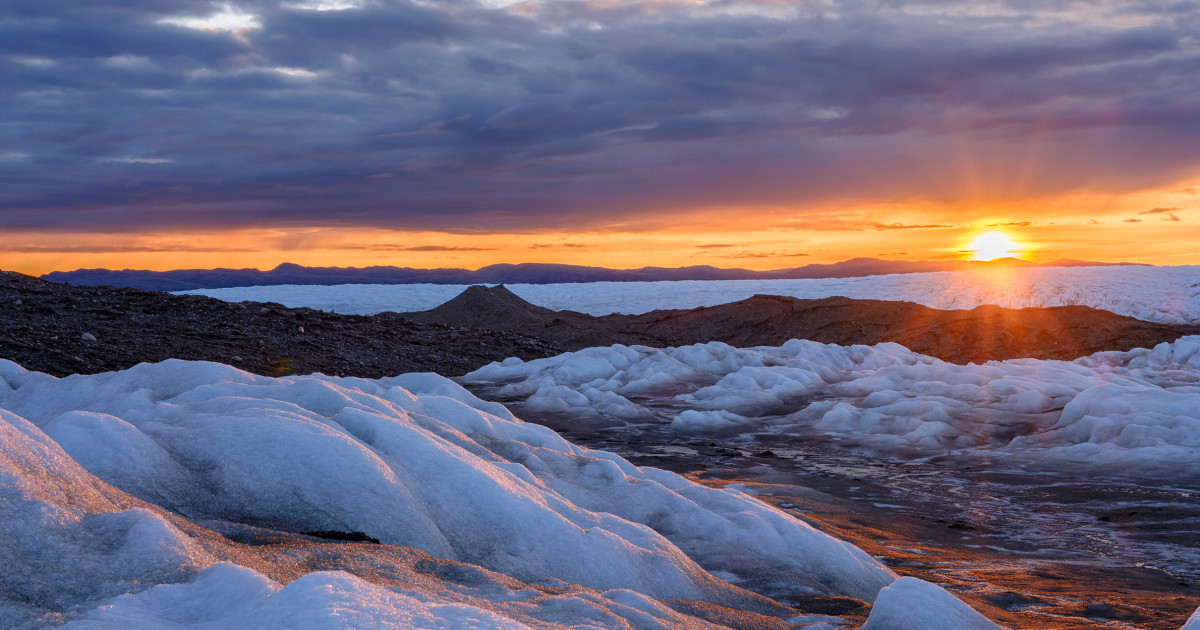Representation of the core, mantle and crust of the Earth.
The Earth is made up of more or less concentric layers that, broadly speaking, are the crust, the mantle and the core.
Each of them is in turn divided into others.
As you indicate in your question, the Earth has a core that has two main layers: what we call the outer core, which is liquid, and what we call the inner core, which is solid.
The fact that the core rotates with the rest of the Earth would not be a problem if the entire Earth were solid, since everything would rotate in a synchronous, coupled way.
The problem arises because the outer core is liquid.
This means that there is a disconnect between what happens above and below this level.
The Earth could rotate and not transmit its rotation to the inner core.
We know that the outer core is liquid because it is not traversed by S-type seismic waves, which produce a shearing motion that cannot propagate in liquids.
We also know that it is composed of iron, nickel, and some lighter elements (oxygen, silicon, sulfur).
It has a very high temperature, about 3000
° C
.
All this makes this liquid have a low viscosity, and therefore, it is very mobile.
And that provokes a series of movements, sometimes very organized, and other times not so much.
Among them, the formation of a kind of eddy dominates, called a 'tangential cylinder', which is basically coaxial with the earth's axis of rotation.
This originates most of the Earth's magnetic field since, as we have seen, the outer core is made up of metals, which are potentially the most magnetic elements.
In addition, the outer core has other more chaotic motions controlled by temperature changes, Coriolis acceleration, and the law of conservation of angular momentum of a rotating body.
All of them originate the rest of the Earth's magnetic field.
The total magnetic field, generated in the outer core,
is coupled to the inner core, also composed of iron and nickel for the most part.
The process is similar to that of a magnet attracting a piece of iron.
As the Earth rotates and the outer core with it, the magnetic field generated by the latter interacts with the inner core causing it to rotate.
And here we come to the most interesting.
The rotation of the Earth is slowing down, mainly due to the effect of the tides, which are large masses of water that move differently depending on latitude and longitude and exert a lot of friction in their movement.
This has several consequences.
One is that the Moon is getting further and further away.
Another is that the slowdown in the rotation of our planet is not immediately transmitted to the inner core, since it is linked to the rest of the Earth by a liquid layer of more than 1000 km in radius that does not transmit the efforts as a solid.
Therefore, the inner core continues to rotate somewhat faster than the rest of the Earth.
In fact, it is this movement that generates the 'tangential cylinder' that we have described above in a kind of process that feeds back.
And how do we know all this?
The origin of the magnetic field is known because magnetohydrodynamic models are made with great precision that allow us to perfectly understand the consequences of the dynamics of the external core, that is, the formation of the Earth's magnetic field.
These models were published in 1995, so they are relatively recent.
On the other hand, seismologists have proven that, indeed, the inner core rotates faster than the rest of the Earth by comparing the arrival times of seismic waves generated at high latitudes (earthquakes in polar regions) and recorded in their Antipodes.
These variations in travel times have been explained by changes in the relative position between the inner and outer core precisely because of the faster rotation of the former.
Nevertheless,
Although all these data are relatively recent, there are some earlier models, from the 1970s, that already proposed that, due to the law of conservation of angular momentum, the inner core had to rotate faster than the outer core and the rest from the earth.
Puy Ayarza Arribas
is a doctor in Geological Sciences and director of the Department of Geology at the University of Salamanca.
Question sent via email by
Viladim Pujols
Coordination and writing:
Victoria Toro
we answer
is a weekly scientific consultancy, sponsored by the
Dr. Antoni Esteve Foundation
and the
L'Oréal-Unesco 'For Women in Science' programme
, which answers readers' questions about science and technology.
They are scientists and technologists, members of
AMIT (Association of Women Researchers and Technologists)
, who answer these questions.
Send your questions to us at
nosotrasrespondemos@gmail.com
or via Twitter #nosotrasrespondemos.
You can follow
MATERIA
on
,
and
, or sign up here to receive
our weekly newsletter
.

/cloudfront-eu-central-1.images.arcpublishing.com/prisa/GGBRRALMDYLAGILLPQZS2QJEVY.jpg)






